The mango, known as the "king of fruits," has a sweet mix of flavors, from honey-like nectar to a hint of citrus. They're delicious and nutritious! Though its pit and tough skin might seem tricky, our step-by-step How to Cut a Mango guide makes it easy! Whether you love mangoes or are new to them, follow our simple steps to cut a mango hassle-free.

Mango is a versatile fruit. It adds vibrant flavor to many dishes. Its sweet taste and unique texture make it perfect for both savory and sweet recipes. You can use mango in refreshing salsas, like this Mango and Pomegranate Salad, for grilled meats, tropical smoothies for breakfast, or as juicy chunks in salads, such as this Red Cabbage and Mango Slaw or this Citrus Avocado Salad Recipe. In desserts, mango becomes the star, featuring in treats like sorbet and cheesecake. Whether in salads, curry sauces, or spicy tacos, mango's versatility turns ordinary meals into extraordinary meals!
Jump to:
Types of mango
- Alphonso (Hapus): Known as the "king of mangoes". It's very flavorful, sweet, and creamy. It is often considered one of the best mango varieties.
- Ataulfo (Honey or Champagne): It's a small, yellow mango. It's buttery, non-fibrous, and has a sweet taste. It's popular for snacking and desserts.
- Kent: A large, sweet mango with a mild flavor and a juicy, fibrous texture. It's widely available and commonly used in various culinary applications.
- Tommy Atkins: A common mango variety with a vibrant red blush over a green and yellow background. It has a mildly sweet taste and is often found in supermarkets.
- Keitt: Known for its lack of stringiness, the Keitt mango is green even when ripe. It has a sweet and fruity flavor, making it suitable for salads and salsas.
- Haden: One of the first varieties to be commercially grown in the United States, the Haden mango is known for its sweet and tangy flavor.
- Chaunsa: A popular mango variety in South Asia, particularly in Pakistan, Chaunsa is known for its aroma, sweetness, and juicy flesh.
- Francis: This mango variety has a sweet, creamy flavor and is often used in smoothies and desserts.
How to choose a ripe mango
When choosing a ripe mango, gently squeeze it to check its firmness. It should yield slightly to pressure but not feel overly soft. If it's too hard, it's likely unripe, and if it's too soft, it may be overripe. Give it a sniff too! A ripe mango will have a sweet and fruity aroma near the stem end. If it lacks a distinctive scent, it might still need more time to ripen.
Depending on the variety, a ripe mango may have a reddish or yellowish hue. Avoid completely green mangoes, as they are likely underripe. However, the absence of green doesn't always indicate ripeness; it's more about the change in color from its original state.
Avoid mangoes with wrinkles or shriveled skin, as these may be overripe. Irregularities or bruising may indicate spoilage.
How to ripen mangoes at home
If you plan to use the mangoes soon, choose slightly riper ones. If you're buying in advance, you can select firmer mangoes and allow them to ripen at home. Storing unripe mangoes at room temperature will help them ripen gradually. To ripen them quicker, place the mangoes in a paper bag with a banana or an apple and fold the bag. Keep the bag at room temperature. Or, because mangoes ripen faster in warmer temperatures, place them in a warm spot, but avoid direct sunlight.
Once they reach the desired ripeness, you can refrigerate them to slow down the ripening process.
How to cut a mango
STEP 1: Wash the Mango, Identify the Pit
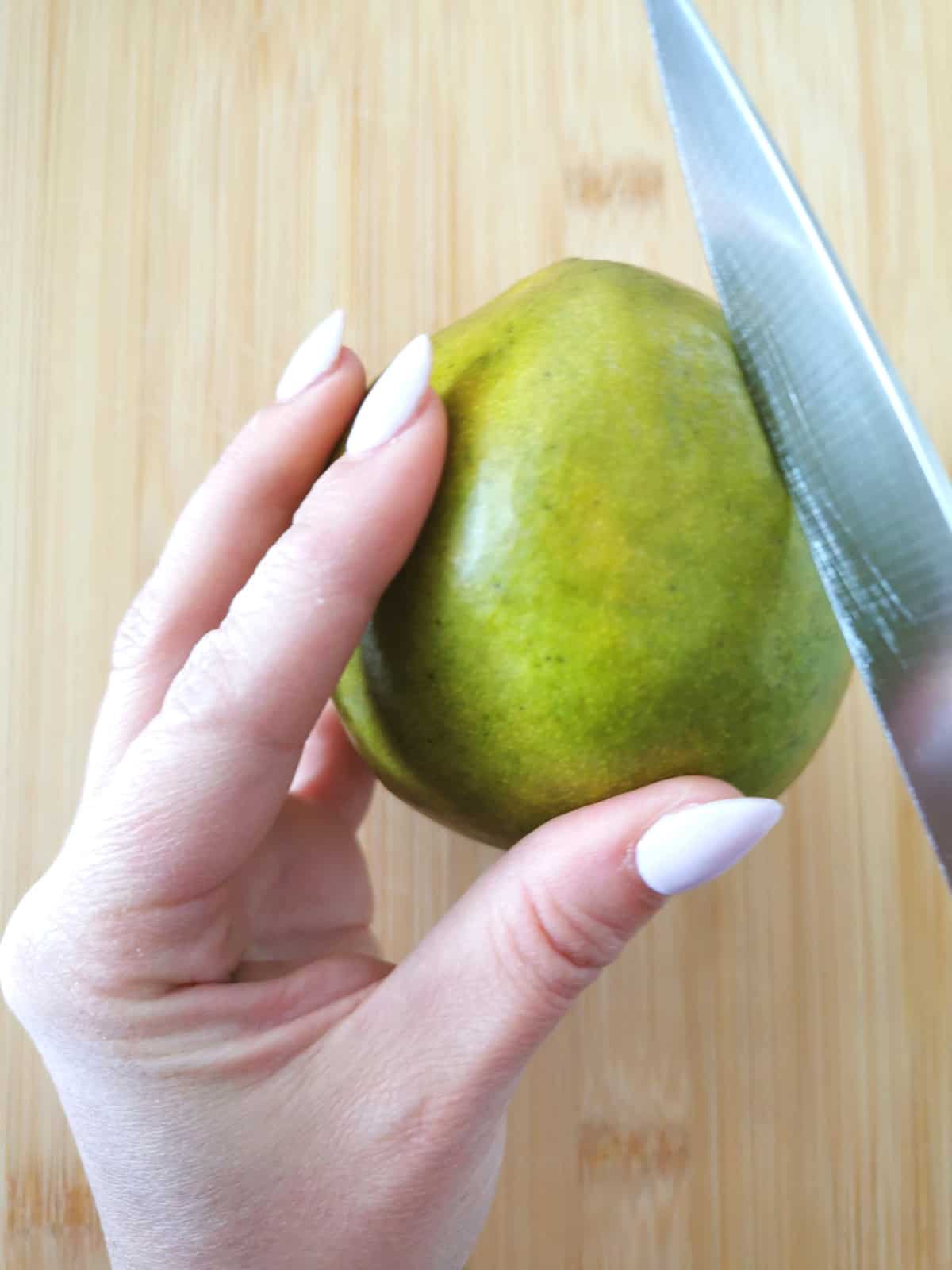
Rinse the mango under cool, running water. Then hold the mango vertically on the cutting board. The large, flat pit runs through the center of the fruit.
STEP 2: Slice off the Sides

With the knife, make two vertical cuts on either side of the pit, keeping the blade parallel to the pit. This will give you two mango "cheeks."
STEP 3: Score the Flesh
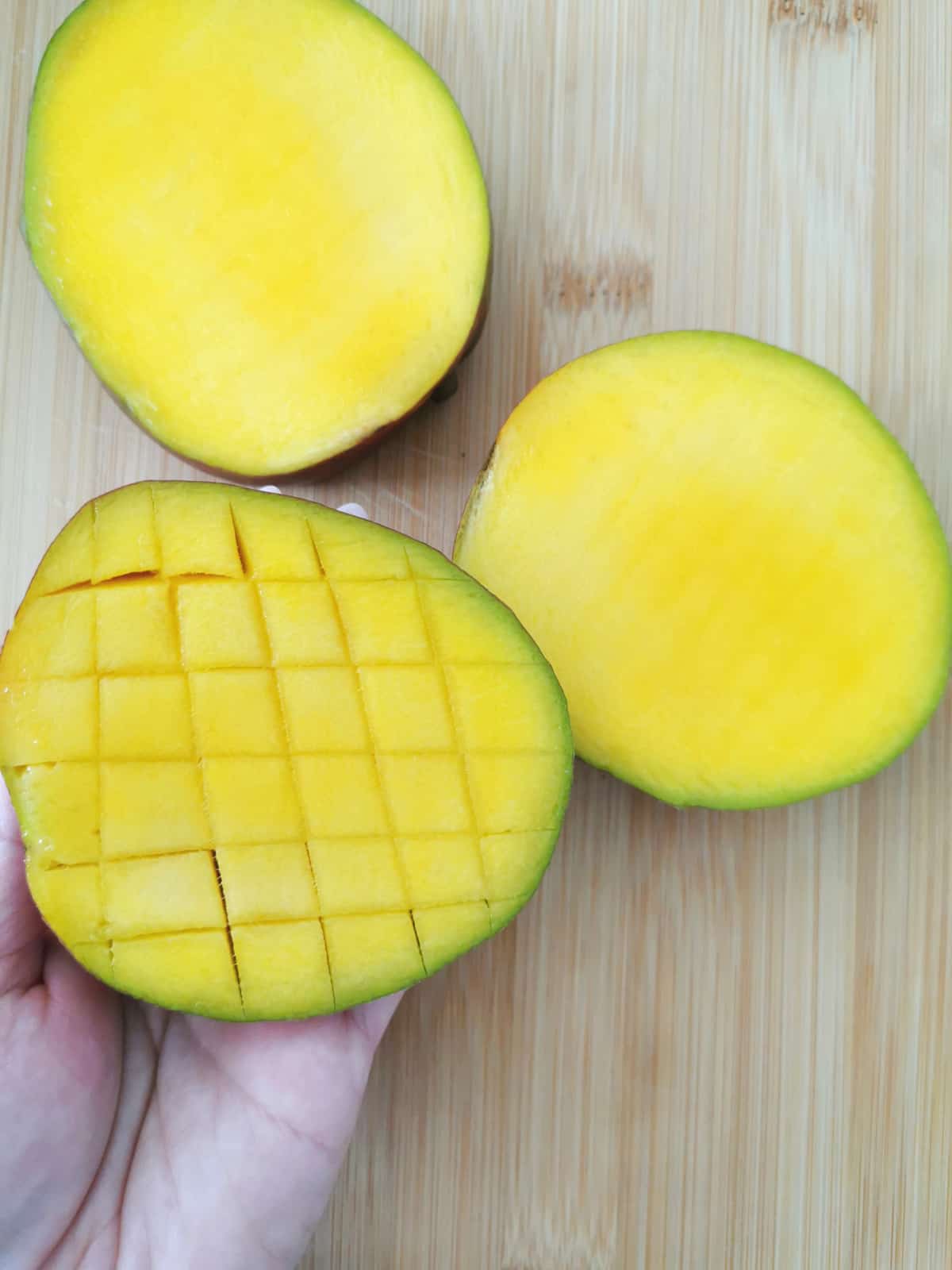
On each mango cheek, carefully make lengthwise and crosswise cuts into the flesh, being careful not to cut through the skin.
STEP 4: Invert the Mango
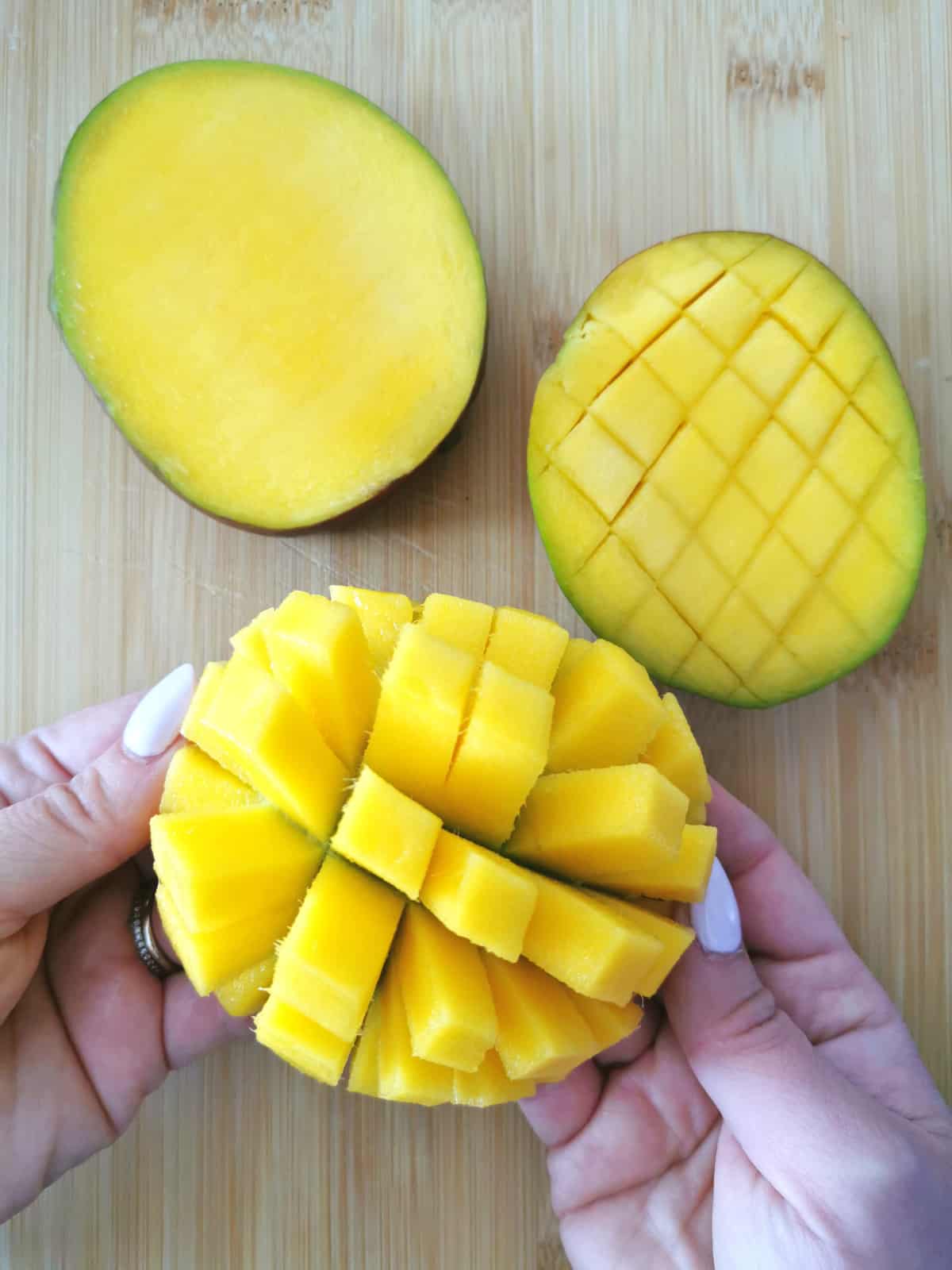
Hold the scored mango cheek in both hands and gently push the skin side from underneath to invert it. This will make it easier to cut or scoop out the bite-sized mango cubes.
STEP 5: Remove Cubes
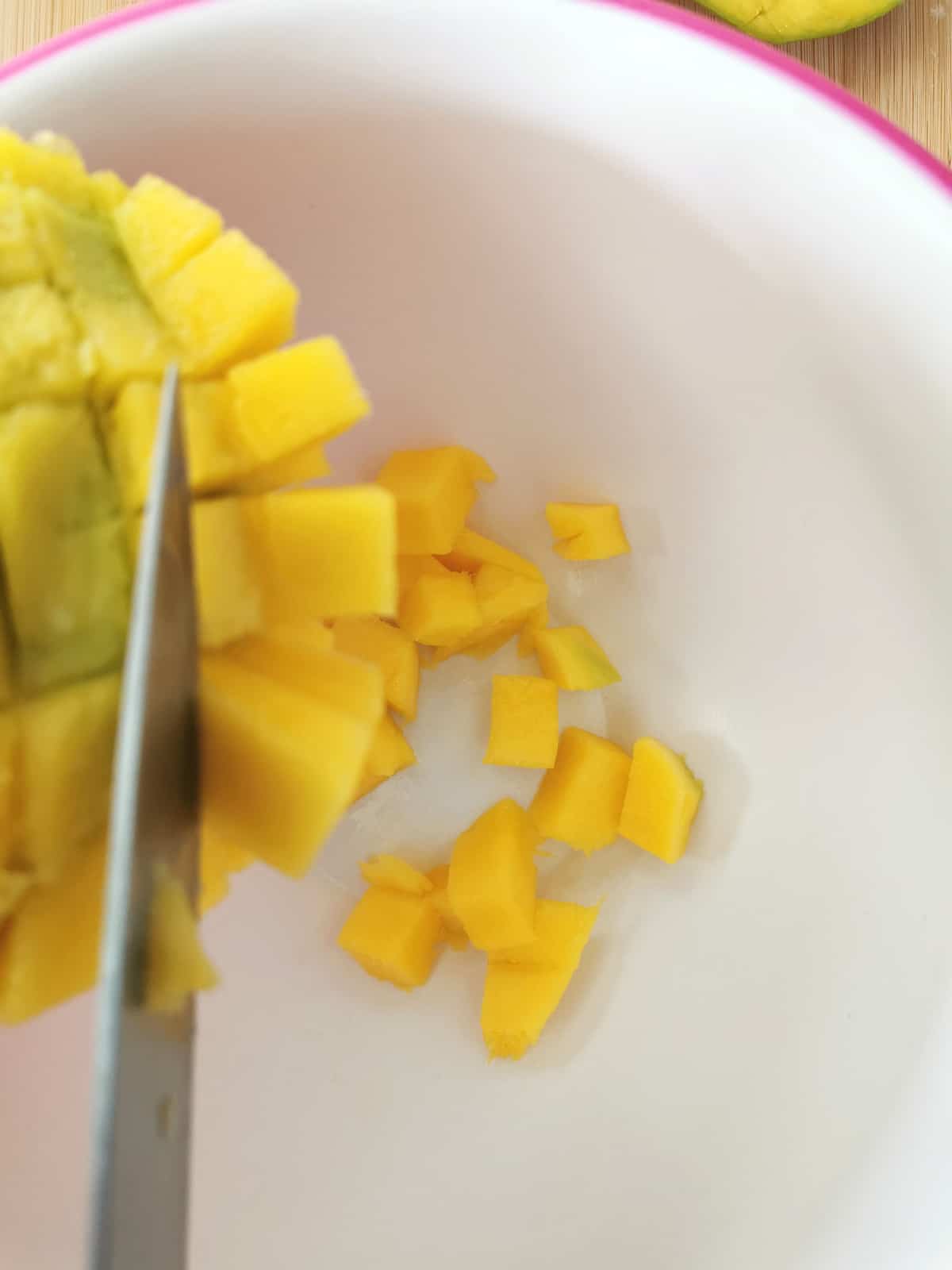
Use your knife to cut out the mango cubes from the inverted cheek. Repeat the process for the other cheek.
STEP 6: Trim Remaining Flesh
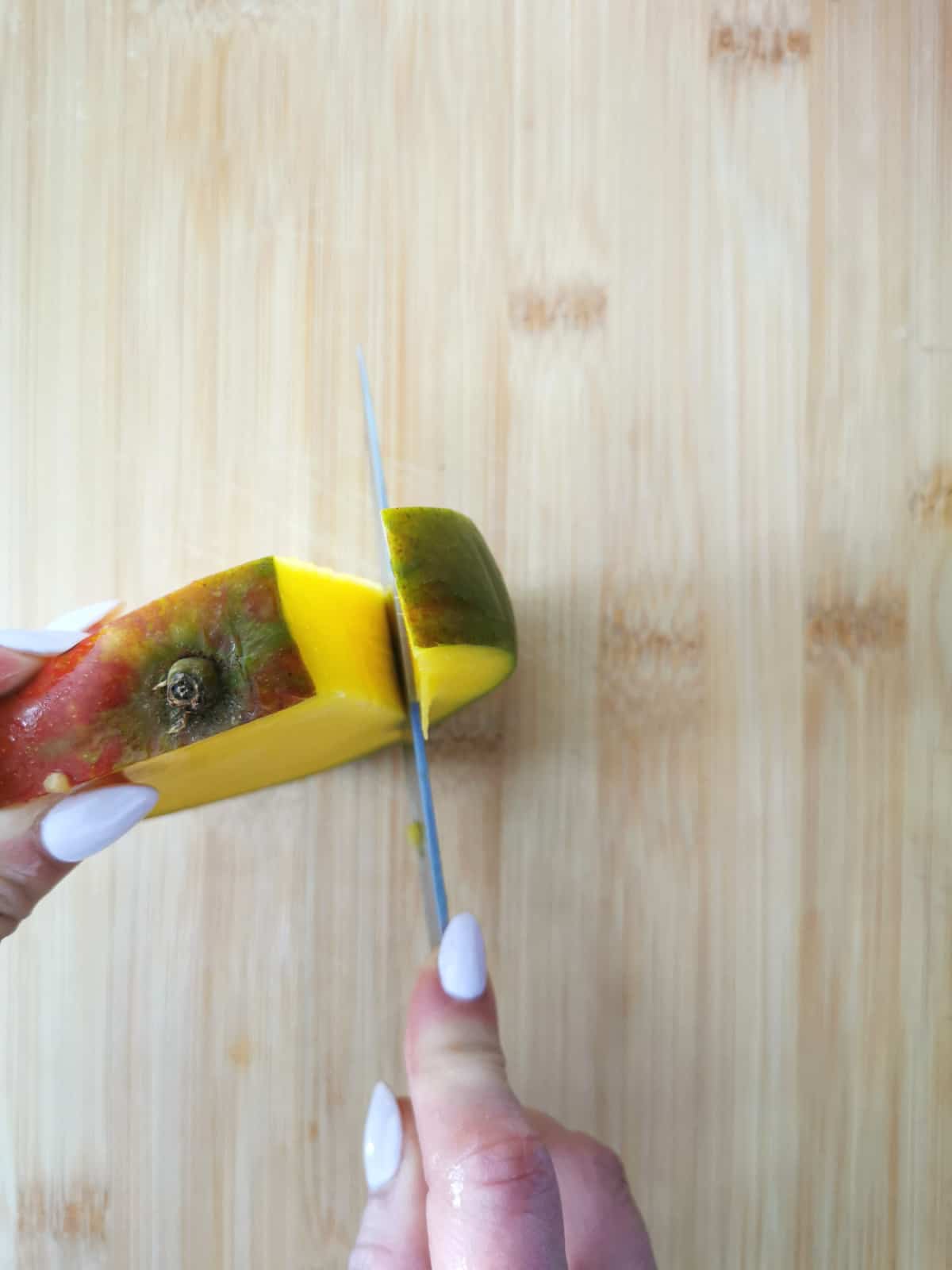
Trim any remaining mango flesh from around the pit. You can do this by carefully slicing off any remaining fruit or by using a knife to peel away the skin from the pit.
Top Tips
- Choose a mango that is ripe but not overly soft. It should give slightly to gentle pressure.
- Use a sharp knife and a stable cutting board to make the cutting process easier and safer.
- If not consuming immediately, toss the cut mango with a bit of lemon or lime juice to prevent browning.
Frequently Asked Questions
A foul or off-putting odor is a clear sign that the mango has spoiled. Fresh mangoes should have a sweet, fruity aroma. Also, If the mango feels excessively mushy and slimy, or has an unusual texture, visible mold, wrinkles, and even oozing liquid (especially with an unpleasant smell) it has gone bad. Overly brown or black discoloration, especially around the stem or on the skin, indicates spoilage as well. If the mango tastes off or has a fermented or sour flavor, it has gone bad.
Yes, you can freeze cut mango for longer storage. Lay the pieces on a tray to freeze individually before transferring them to a sealed bag or container. Frozen cut-up mangoes are great in smoothies!
If you don't plan to eat the cut-up mango immediately, place it in an airtight container and refrigerate it as soon as possible. The cold temperature slows down the ripening process and helps maintain the quality. It should be consumed within a few days of refrigerating.
How to keep cut mangoes fresh
Add lemon or lime juice: To prevent browning and add a citrusy flavor, you can toss the cut-up mango with a bit of lemon or lime juice before storing it in an airtight container.
Use plastic wrap or beeswax wrap: You can also wrap the cut-up mango in plastic wrap or beeswax wrap. Just make sure it's well-sealed to minimize exposure to air.
Use a produce saver: Using produce savers or containers designed for storing fruits and vegetables helps regulate humidity and extend the freshness.
Store in portion-sized containers: If you plan to use the cut-up mango in specific portions (for snacks, lunches, etc.), store them in small, portion-sized containers. This way, you can grab what you need without exposing the rest to air.
Other how-to guides
If you tried this How to Cut a Mango guide or any other guide or recipe on my website, please leave a 🌟 star rating and let me know how it went in the 📝 comments below. Thanks for visiting!
Recipe

How to Cut a Mango
Equipment
Ingredients
- 1 Mango of your choice
Instructions
- Rinse the mango under cool, running water to remove any residue from the skin.
- Hold the mango vertically on the cutting board. The large, flat pit runs through the center of the fruit.
- Using a sharp knife, make two vertical cuts on both side of the pit, keeping the blade parallel to the pit. This will give you two mango "cheeks."
- On each mango cheek, carefully make lengthwise and crosswise cuts into the flesh, being careful not to cut through the skin. invert each cheek.
- Use your knife or a table spoon to cut or simply scoop out the mango cubes from the inverted cheek. Repeat the process for the other cheek.
- Trim any remaining mango flesh from around the pit. You can do this by carefully slicing off any remaining fruit or by using the knife to peel away the skin from the pit.
Notes
-
- Choose a mango that is ripe but not overly soft. It should give slightly to gentle pressure.
-
- Rinse the mango under cool, running water to remove any dirt or residues from the skin - don't skip this step.
-
- Use a sharp knife and a stable cutting board to make the cutting process easier and safer.
- If not consuming immediately, toss the cut mango with a bit of lemon or lime juice to prevent browning.

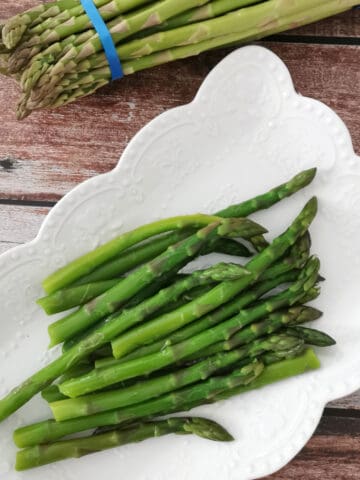


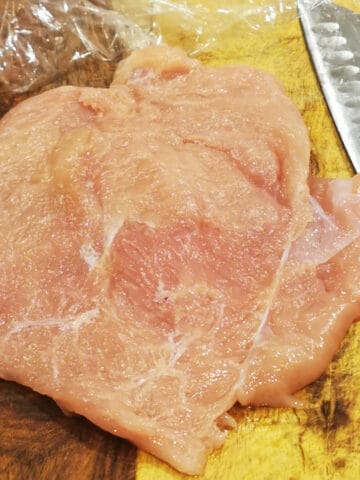
Comments
No Comments